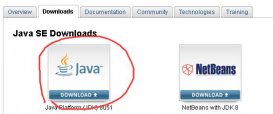單獨使用MyBatis對事物進行管理
前面MyBatis的文章有寫過相關內容,這里繼續寫一個最簡單的Demo,算是復習一下之前MyBatis的內容吧,先是建表,建立一個簡單的Student表:
|
1
2
3
4
5
6
|
create table student(student_id int auto_increment,student_name varchar(20) not null,primary key(student_id)) |
建立實體類Student.java:
|
1
2
3
4
5
6
7
8
9
10
11
12
13
14
15
16
17
18
19
20
21
22
23
24
25
|
public class Student{private int studentId;private String studentName;public int getStudentId(){return studentId;}public void setStudentId(int studentId){this.studentId = studentId;}public String getStudentName(){return studentName;}public void setStudentName(String studentName){this.studentName = studentName;}public String toString(){return "Student{[studentId:" + studentId + "], [studentName:" + studentName + "]}";}} |
多說一句,對實體類重寫toString()方法,打印其中每一個(或者說是關鍵屬性)是一個推薦的做法。接著是config.xml,里面是jdbc基本配置:
|
1
2
3
4
5
6
7
8
9
10
11
12
13
14
15
16
17
18
19
20
21
22
|
<?xml version="1.0" encoding="UTF-8" ?><!DOCTYPE configuration PUBLIC "-//mybatis.org//DTD Config 3.0//EN""http://mybatis.org/dtd/mybatis-3-config.dtd"><configuration><typeAliases><typeAlias alias="Student" type="org.xrq.domain.Student" /></typeAliases><environments default="development"><environment id="development"><transactionManager type="JDBC"/><dataSource type="POOLED"><property name="driver" value="com.mysql.jdbc.Driver"/><property name="url" value="jdbc:mysql://localhost:3306/test"/><property name="username" value="root"/><property name="password" value="root"/></dataSource></environment></environments><mappers><mapper resource="student_mapper.xml"/></mappers></configuration> |
然后是student_mapper.xml,主要是具體的sql語句:
|
1
2
3
4
5
6
7
8
9
10
11
12
|
<mapper namespace="StudentMapper"><resultMap type="Student" id="StudentMap"><id column="student_id" property="studentId" jdbcType="INTEGER" /><result column="student_name" property="studentName" jdbcType="VARCHAR" /></resultMap><select id="selectAllStudents" resultMap="StudentMap">select student_id, student_name from student;</select><insert id="insertStudent" useGeneratedKeys="true" keyProperty="studentId" parameterType="Student">insert into student(student_id, student_name) values(#{studentId, jdbcType=INTEGER}, #{studentName, jdbcType=VARCHAR});</insert></mapper> |
建立一個MyBatisUtil.java,用于建立一些MyBatis基本元素的,后面的類都繼承這個類:
|
1
2
3
4
5
6
7
8
9
10
11
12
13
14
15
16
17
18
19
20
21
|
public class MyBatisUtil{protected static SqlSessionFactory ssf;protected static Reader reader;static{try{reader = Resources.getResourceAsReader("config.xml");ssf = new SqlSessionFactoryBuilder().build(reader);} catch (IOException e){e.printStackTrace();}}protected SqlSession getSqlSession(){return ssf.openSession();}} |
企業級開發講求:
1、定義和實現分開
2、分層開發,通常情況下為Dao-->Service-->Controller,不排除根據具體情況多一層/幾層或少一層
所以,先寫一個StudentDao.java接口:
|
1
2
3
4
5
|
public interface StudentDao{public List<Student> selectAllStudents();public int insertStudent(Student student);} |
最后寫一個StudentDaoImpl.java實現這個接口,注意要繼承MyBatisUtil.java類:
|
1
2
3
4
5
6
7
8
9
10
11
12
13
14
15
16
17
18
19
|
public class StudentDaoImpl extends MyBatisUtil implements StudentDao{private static final String NAMESPACE = "StudentMapper.";public List<Student> selectAllStudents(){SqlSession ss = getSqlSession();List<Student> list = ss.selectList(NAMESPACE + "selectAllStudents");ss.close();return list;}public int insertStudent(Student student){SqlSession ss = getSqlSession();int i = ss.insert(NAMESPACE + "insertStudent", student);// ss.commit();ss.close();return i;}} |
寫一個測試類:
|
1
2
3
4
5
6
7
8
9
10
11
12
13
14
15
|
public class StudentTest{public static void main(String[] args){StudentDao studentDao = new StudentDaoImpl();Student student = new Student();student.setStudentName("Jack");studentDao.insertStudent(student);System.out.println("插入的主鍵為:" + student.getStudentId());System.out.println("-----Display students------");List<Student> studentList = studentDao.selectAllStudents();for (int i = 0, length = studentList.size(); i < length; i++)System.out.println(studentList.get(i));}} |
結果一定是空。
我說過這個例子既是作為復習,也是作為一個引子引入我們今天的內容,空的原因是,insert操作已經做了,但是MyBatis并不會幫我們自動提交事物,所以展示出來的自然是空的。這種時候就必須手動通過SqlSession的commit()方法提交事務,即打開StudentDaoImpl.java類第17行的注釋就可以了。
多說一句,這個例子除了基本的MyBatis插入操作之外,在插入的基礎上還有返回插入的主鍵id的功能。
接下來,就利用Spring管理MyBatis事物,這也是企業級開發中最常用的事物管理做法。
使用Spring管理MyBatis事物
關于這塊,網上有很多文章講解,我搜索了很多,但是要么就是相互復制黏貼,要么就是沒有把整個例子講清楚的,通過這一部分,我盡量講清楚如何使用Spring管理MyBatis事物。
使用Spring管理MyBatis事物,除了Spring必要的模塊beans、context、core、expression、commons-logging之外,還需要以下內容:
(1)MyBatis-Spring-1.x.0.jar,這個是Spring集成MyBatis必要的jar包
(2)數據庫連接池,dbcp、c3p0都可以使用,我這里使用的是阿里的druid
(3)jdbc、tx、aop,jdbc是基本的不多說,用到tx和aop是因為Spring對MyBatis事物管理的支持是通過aop來實現的
(4)aopalliance.jar,這個是使用Spring AOP必要的一個jar包
上面的jar包會使用Maven的可以使用Maven下載,沒用過Maven的可以去CSDN上下載,一搜索就有的。
MyBatis的配置文件config.xml里面,關于jdbc連接的部分可以都去掉,只保留typeAliases的部分:
|
1
2
3
4
5
6
7
8
|
<?xml version="1.0" encoding="UTF-8" ?><!DOCTYPE configuration PUBLIC "-//mybatis.org//DTD Config 3.0//EN""http://mybatis.org/dtd/mybatis-3-config.dtd"><configuration><typeAliases><typeAlias alias="Student" type="org.xrq.domain.Student" /></typeAliases></configuration> |
多提一句,MyBatis另外一個配置文件student_mapper.xml不需要改動。接著,寫Spring的配置文件,我起名字叫做spring.xml:
|
1
2
3
4
5
6
7
8
9
10
11
12
13
14
15
16
17
18
19
20
21
22
23
24
25
26
27
28
29
30
31
32
|
<?xml version="1.0" encoding="UTF-8"?><beans xmlns:xsi="http://www.w3.org/2001/XMLSchema-instance"xmlns="http://www.springframework.org/schema/beans"xmlns:context="http://www.springframework.org/schema/context"xmlns:tx="http://www.springframework.org/schema/tx"xmlns:aop="http://www.springframework.org/schema/aop"xsi:schemaLocation="http://www.springframework.org/schema/beans http://www.springframework.org/schema/beans/spring-beans-4.2.xsdhttp://www.springframework.org/schema/context http://www.springframework.org/schema/context/spring-context-4.2.xsd http://www.springframework.org/schema/jdbc http://www.springframework.org/schema/jdbc/spring-jdbc-4.2.xsdhttp://www.springframework.org/schema/tx http://www.springframework.org/schema/tx/spring-tx-4.2.xsd http://www.springframework.org/schema/aop http://www.springframework.org/schema/aop/spring-aop-4.2.xsd"><!-- 注解配置 --><tx:annotation-driven transaction-manager="transactionManager" /><context:annotation-config /> <context:component-scan base-package="org.xrq" /><!-- 數據庫連接池,這里使用alibaba的Druid --><bean id="dataSource" class="com.alibaba.druid.pool.DruidDataSource" init-method="init" destroy-method="close"><property name="url" value="jdbc:mysql://localhost:3306/test" /> <property name="username" value="root" /> <property name="password" value="root" /> </bean><bean id="sqlSessionFactory" class="org.mybatis.spring.SqlSessionFactoryBean"><property name="configLocation" value="classpath:config.xml" /><property name="mapperLocations" value="classpath:*_mapper.xml" /><property name="dataSource" ref="dataSource" /></bean><!-- 事務管理器 --> <bean id="transactionManager" class="org.springframework.jdbc.datasource.DataSourceTransactionManager"> <property name="dataSource" ref="dataSource" /> </bean> </beans> |
這里面主要就是事務管理器和數據庫連接池兩部分的內容。
另外我們看到有一個SqlSessionFactory,使用過MyBatis的朋友們一定對這個類不陌生,它是用于配置MyBatis環境的,SqlSessionFactory里面有兩個屬性configLocation、mapperLocations,顧名思義分別代表配置文件的位置和映射文件的位置,這里只要路徑配置正確,Spring便會自動去加載這兩個配置文件了。
然后要修改的是Dao的實現類,此時不再繼承之前的MyBatisUtil這個類,而是繼承MyBatis-Spring-1.x.0.jar自帶的SqlSessionDaoSupport.java,具體代碼如下:
|
1
2
3
4
5
6
7
8
9
10
11
12
13
14
15
16
17
18
|
@Repositorypublic class StudentDaoImpl extends SqlSessionDaoSupport implements StudentDao{private static final String NAMESPACE = "StudentMapper.";@Resourcepublic void setSqlSessionFactory(SqlSessionFactory sqlSessionFactory){super.setSqlSessionFactory(sqlSessionFactory);}public List<Student> selectAllStudents(){return getSqlSession().selectList(NAMESPACE + "selectAllStudents");}public int insertStudent(Student student){return getSqlSession().insert(NAMESPACE + "insertStudent", student);}} |
這里用到了兩個注解,分別說一下。
(1)@Repository,這個注解和@Component、@Controller和我們最常見的@Service注解是一個作用,都可以將一個類聲明為一個Spring的Bean。它們的區別到不在于具體的語義上,更多的是在于注解的定位上。之前說過,企業級應用注重分層開發的概念,因此,對這四個相似的注解應當有以下的理解:
•@Repository注解,對應的是持久層即Dao層,其作用是直接和數據庫交互,通常來說一個方法對應一條具體的Sql語句
•@Service注解,對應的是服務層即Service層,其作用是對單條/多條Sql語句進行組合處理,當然如果簡單的話就直接調用Dao層的某個方法了
•@Controller注解,對應的是控制層即MVC設計模式中的控制層,其作用是接收用戶請求,根據請求調用不同的Service取數據,并根據需求對數據進行組合、包裝返回給前端
•@Component注解,這個更多對應的是一個組件的概念,如果一個Bean不知道屬于拿個層,可以使用@Component注解標注
這也體現了注解的其中一個優點:見名知意,即看到這個注解就大致知道這個類的作用即它在整個項目中的定位。
(2)@Resource,這個注解和@Autowired注解是一個意思,都可以自動注入屬性屬性。由于SqlSessionFactory是MyBatis的核心,它在spring.xml中又進行過了聲明,因此這里通過@Resource注解將id為"sqlSessionFactory"的Bean給注入進來,之后就可以通過getSqlSession()方法獲取到SqlSession并進行數據的增、刪、改、查了。
最后無非就是寫一個測試類測試一下:
|
1
2
3
4
5
6
7
8
9
10
11
12
13
14
15
16
|
public class StudentTest{public static void main(String[] args){ApplicationContext ac = new ClassPathXmlApplicationContext("spring.xml");StudentDao studentDao = (StudentDao)ac.getBean("studentDaoImpl");Student student = new Student();student.setStudentName("Lucy");int j = studentDao.insertStudent(student);System.out.println("j = " + j + "\n");System.out.println("-----Display students------");List<Student> studentList = studentDao.selectAllStudents();for (int i = 0, length = studentList.size(); i < length; i++)System.out.println(studentList.get(i));}} |
由于StudentDaoImpl.java類使用了@Repository注解且沒有指定別名,因此StudentDaoImpl.java在Spring容器中的名字為"首字母小寫+剩余字母"即"studentDaoImpl"。
運行一下程序,可以看見控制臺上遍歷出了new出來的Student,即該Student直接被插入了數據庫中,整個過程中沒有任何的commit、rollback,全部都是由Spring幫助我們實現的,這就是利用Spring對MyBatis進行事物管理。
后記
本文復習了MyBatis的基本使用與使用Spring對MyBatis進行事物管理,給出了比較詳細的代碼例子,有需要的朋友們可以照著代碼研究一下。在本文的基礎上,后面還會寫一篇文章,講解一下多數據在單表和多表之間的事物管理實現,這種需求也是屬于企業及應用中比較常見的需求。














